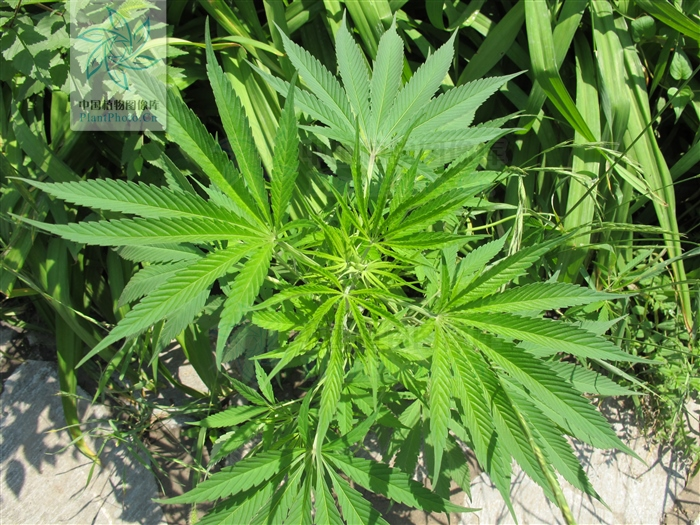 Description
Description
Cannabis sativa is an annual herbaceous flowering plant indigenous to eastern Asia but now of cosmopolitan distribution due to widespread cultivation. It has been cultivated throughout recorded history, used as a source of industrial fiber, seed oil, food, recreation, religious and spiritual moods and medicine. C. sativa has been used as hallucinogenic, hypnotic, sedative, analgesic, and anti-inflammatory agent.
- SUMMARY
-
Published journals
Biorxiv
-
Publish date
2018.10
-
Sequence Method
PacBio, Nanopore, Illumina
-
Assembly
cs10
-
Assembly Method
minimap, miniasm2, pilon, BWA
-
Genome Size
876.148 Mb
-
Genome Coverage
100x
-
Scaffolds
221
-
Contigs
1052
-
N50
1959202
-
GC%
36.15
-
Bioproject
PRJEB29284
-
GCA Number
GCA_900626175.2
-
Data
https://ftp.ncbi.nlm.nih.gov/genomes/all/GCF/900/626/175/GCF_900626175.2_cs10/
-
Reference url
 Reference
Reference
Grassa, C. J., Wenger, J. P., Dabney, C., Poplawski, S. G., Motley, S. T., Michael, T. P., ... & Weiblen, G. D. (2018). A complete Cannabis chromosome assembly and adaptive admixture for elevated cannabidiol (CBD) content. BioRxiv, 458083.
- SUMMARY
-
Published journals
Horticulture Research
-
Publish date
2020.05
-
Sequence Method
PacBio Sequel
-
Assembly
ASM1303036v1
-
Assembly Method
Canu v. 1.5; SmartDenovo v. 1.5; WTDBG v. 2.2; Quickmerge v. 0.2; HiC-Pro v. 2.7.8; Lachesis v. c23474f-v3
-
Genome Size
812.525 Mb
-
Genome Coverage
153x
-
Scaffolds
483
-
Contigs
2978
-
N50
509999
-
GC%
33.8
-
Bioproject
PRJNA562042
-
GCA Number
GCA_013030365.1
-
Data
https://ftp.ncbi.nlm.nih.gov/genomes/all/GCA/013/030/365/GCA_013030365.1_ASM1303036v1/
-
Reference url
 Reference
Reference
Gao, S., Wang, B., Xie, S., Xu, X., Zhang, J., Pei, L., Yu, Y., Yang, W., & Zhang, Y. (2020). A high-quality reference genome of wild Cannabis sativa. Horticulture research, 7, 73.
- SUMMARY
-
Published journals
Genome Research
-
Publish date
2018.11
-
Sequence Method
PacBio Sequel
-
Assembly
ASM341772v2
-
Assembly Method
FALCON v. 1.8.6
-
Genome Size
1009.67 Mb
-
Genome Coverage
97.63x
-
Scaffolds
5303
-
Contigs
5303
-
N50
370471
-
GC%
34.1395
-
Bioproject
PRJNA73819
-
GCA Number
GCA_003417725.2
-
Data
https://ftp.ncbi.nlm.nih.gov/genomes/all/GCA/003/417/725/GCA_003417725.2_ASM341772v2/
-
Reference url
 Reference
Reference
Laverty, K. U., Stout, J. M., Sullivan, M. J., Shah, H., Gill, N., Holbrook, L., Deikus, G., Sebra, R., Hughes, T. R., Page, J. E., & van Bakel, H. (2019). A physical and genetic map of Cannabis sativa identifies extensive rearrangements at the THC/CBD acid synthase loci. Genome research, 29(1), 146–156.
- SUMMARY
-
Published journals
Genome Research
-
Publish date
2018.11
-
Sequence Method
PacBio Sequel
-
Assembly
ASM23057v5
-
Assembly Method
FALCON v. 0.4.0
-
Genome Size
891.965 Mb
-
Genome Coverage
79x
-
Scaffolds
12836
-
Contigs
12836
-
N50
133904
-
GC%
34.0177
-
Bioproject
PRJNA73819
-
GCA Number
GCA_000230575.5
-
Data
https://ftp.ncbi.nlm.nih.gov/genomes/all/GCA/000/230/575/GCA_000230575.5_ASM23057v5/
-
Reference url
 Reference
Reference
Laverty, K. U., Stout, J. M., Sullivan, M. J., Shah, H., Gill, N., Holbrook, L., Deikus, G., Sebra, R., Hughes, T. R., Page, J. E., & van Bakel, H. (2019). A physical and genetic map of Cannabis sativa identifies extensive rearrangements at the THC/CBD acid synthase loci. Genome research, 29(1), 146–156.
